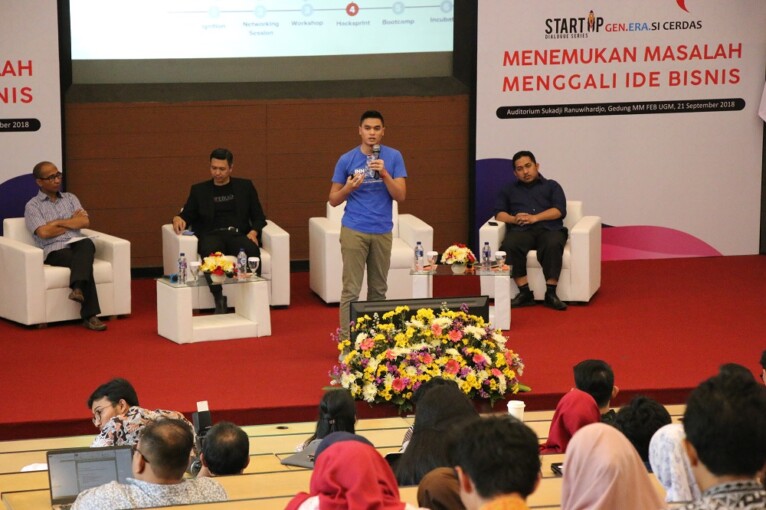
Faculty of Agriculture UGM held the 8th Research Result Seminar on Saturday (9/22) at Prof. Harjono Danoesastro Auditorium UGM. The seminar aimed to improve agricultural publications, produce sustainable agricultural research, encourage researchers to increase applicable research, and realize research blueprint for government policy.
The seminar was divided into two sessions. The first was presentation by keynote speakers, while the second was presentation of agricultural papers in small classes.
Prof. Ir. Benito Heru Purwanto, M.Agr.Sc., Head of Department of Soil Science, keynote speaker, stated that the world had entered the era of Internet of Things. This was marked by the use of network-based technology that could reduce the distance between humans, agriculture.
The Internet of Things in agriculture, Heru said, is commonly referred to as Agriculture 4.0. This stage is a continuation of the previous stages in agriculture, similar to the Industrial Revolution.
“In Agriculture 1.0, new labor-intensive work was strengthened to increase agricultural output. Agricultural 2.0, marked by the green revolution, was technology use for agriculture. In Agriculture 3.0, precision farming was developed by using Global Positioning System to improve the accuracy of agricultural machinery. Then, Agricultural 4.0 emerged to continue precision farming with big data that utilized the internet.”
Heru asserted that this development was needed to see human condition in the world. “Global human population is increasing along with an increase in agricultural demand. Hence, to increase the quantity and quality of agriculture, modernization is required.”
However, Heru opined, there were some obstacles in the process. The obstacles included the loss of arable land, climate change, and social problems.
This was confirmed by another keynote speaker, Prof. Dr. Dedi Nursyamsi, M.Agr., Head of Indonesian Center for Agricultural Land Resources Research and Development. He mentioned the issue of land reduction was caused by the increasing land conversion. “Every year, at least around 96,500 hectares of land are converted (into residential settlement, etc),” he said.
Meanwhile, according to Dedi, climate change was most detrimental to agricultural sector. This fact was obtained after he noticed the diminishing agricultural resources, but the sector was still blamed for the increase in greenhouse gas emissions that led to climate change.
In fact, Dedi said, GHG emissions produced by agricultural sector was still below energy and forestry sectors. On the other hand, he continued, agriculture was the most crucial sector because it concerned human life.
“If agriculture weakens, Indonesia also weakens. On the contrary, if agriculture rises, Indonesia rises as well.”
Therefore, he mentioned several strategies to save the agricultural sector. They are extensification, intensification, restraining land conversions, and adaptation. He explained that the three initial strategies were processes while the latter strategy was the goal.
“By using technology, this strategy can be implemented. This is one of the adaptation processes of agricultural sector towards the development of times,” he concluded.

